Shared Hydrogen Mobility
Who wants to drive a hydrogen vehicle (FCV) when there are not many fuel stations around, the vehicles are expensive and most hydrogen is fossil-based?
Who wants to drive a hydrogen vehicle (FCV) when there are not many fuel stations around, the vehicles are expensive and most hydrogen is fossil-based?
However, the opportunity is strong: hydrogen can be produced 100% sustainable and offers a great flexible storage solution for wind and solar energy. And we need both electric and hydrogen vehicles to get the highest possible speed in transitioning to zero-emission mobility.
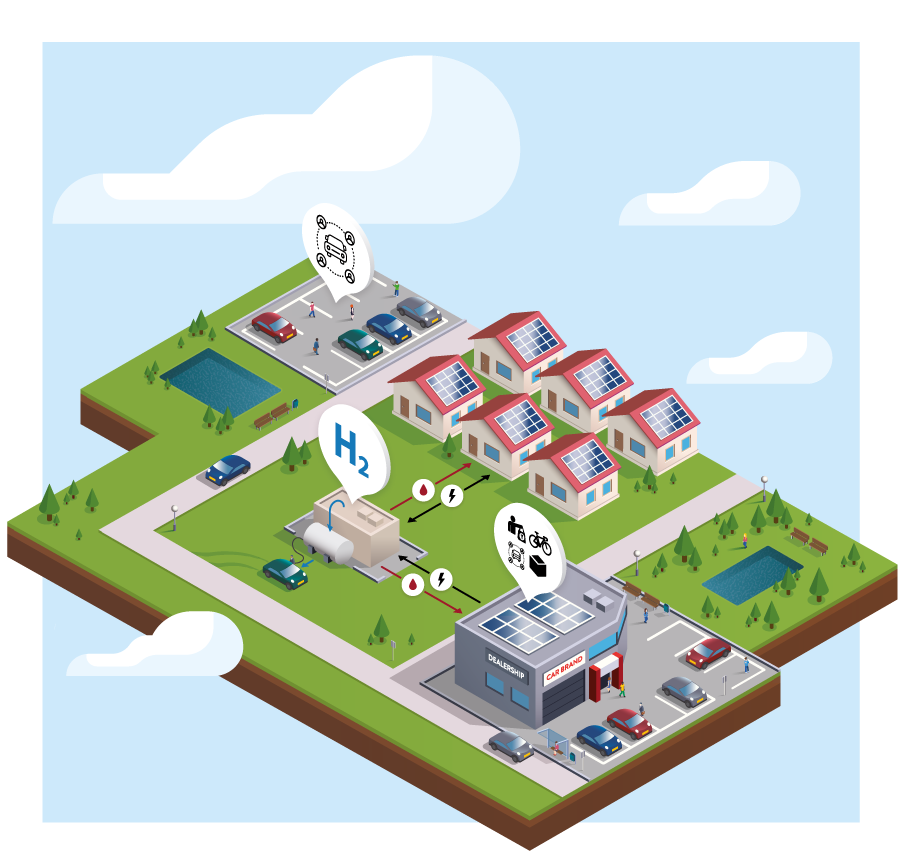
We introduce a solution where neighborhood residents generate hydrogen collectively from the solar panels on their roof tops. 200 homes generate enough hydrogen to refuel 5 hydrogen vehicle every day.
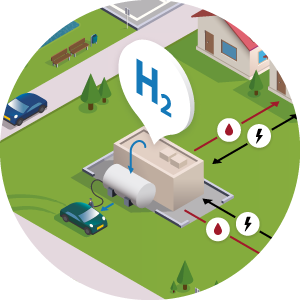
Residents fuel FCV vehicles at home
The electrolyzer, needed to create hydrogen from solar energy, produces heat. This heat is fed back to the homes by means of hot water that is used for dishwashers, showers etc. Reusing heat increases hydrogen production efficiency.
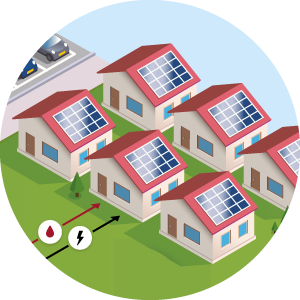
Domestic roof-top solar produce hydrogen locally and homes reuse excess heat
Car-sharing increases the utilization level of vehicles and lowers the cost for users. For many households, a community-based pool of shared FCV’s can at least replace the second family car, and even in some cases the first car.
A key driver for the success of green hydrogen in society is the possibility for consumers to participate in the use and production of it. With this proposition, residents produce the energy for their cars, thus maximizing the ROI of their solar panels and enjoying the pleasure of collectively creating a sustainable mobility solution.
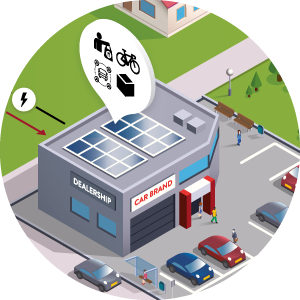
New role for car dealerships to manage local community services
Residents always have a full tank at the start of their journey. An FCV can do 500km on a tank so user will not need to refuel on their way. At the same time, with this proposition we add new tank stations to the national pool, thus solving the chicken and egg problem of the FCV: no demand for FCV due to lack of stations; no investment for stations due to lack of FCV demand.

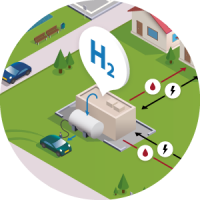
Residents fuel FCV vehicles at home

Community car share program with FCVs
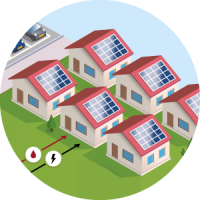
Domestic roof-top solar produce hydrogen locally and homes reuse excess heat

New role for car dealerships to manage local community services
Shared hydrogen mobility creates value for key stakeholders:
We invite business partners to participate in the realization of the shared hydrogen mobility proposition. Residential areas of major Dutch cities will be the first focus. Automotive OEM’s, importers, technology partners and other players in the H2 ecosystem are invited to share their interest via the form below
Our role: we will develop the proposition, work with local governments to select the neighborhood, build the partnerships and market the service to the residents.
February – April: Feedback interested partners
May: Information session in Amsterdam
June – September: Explore partnerships